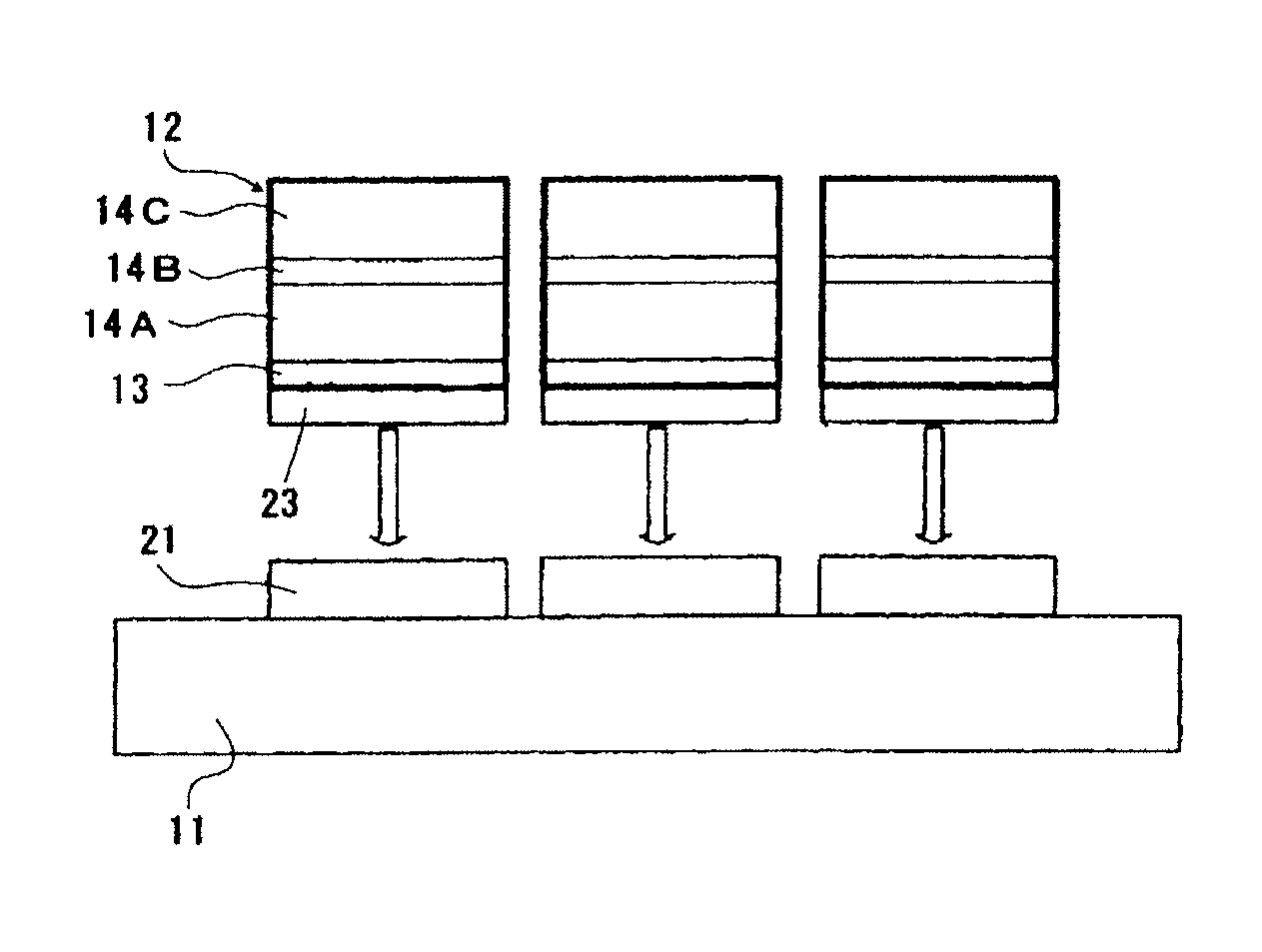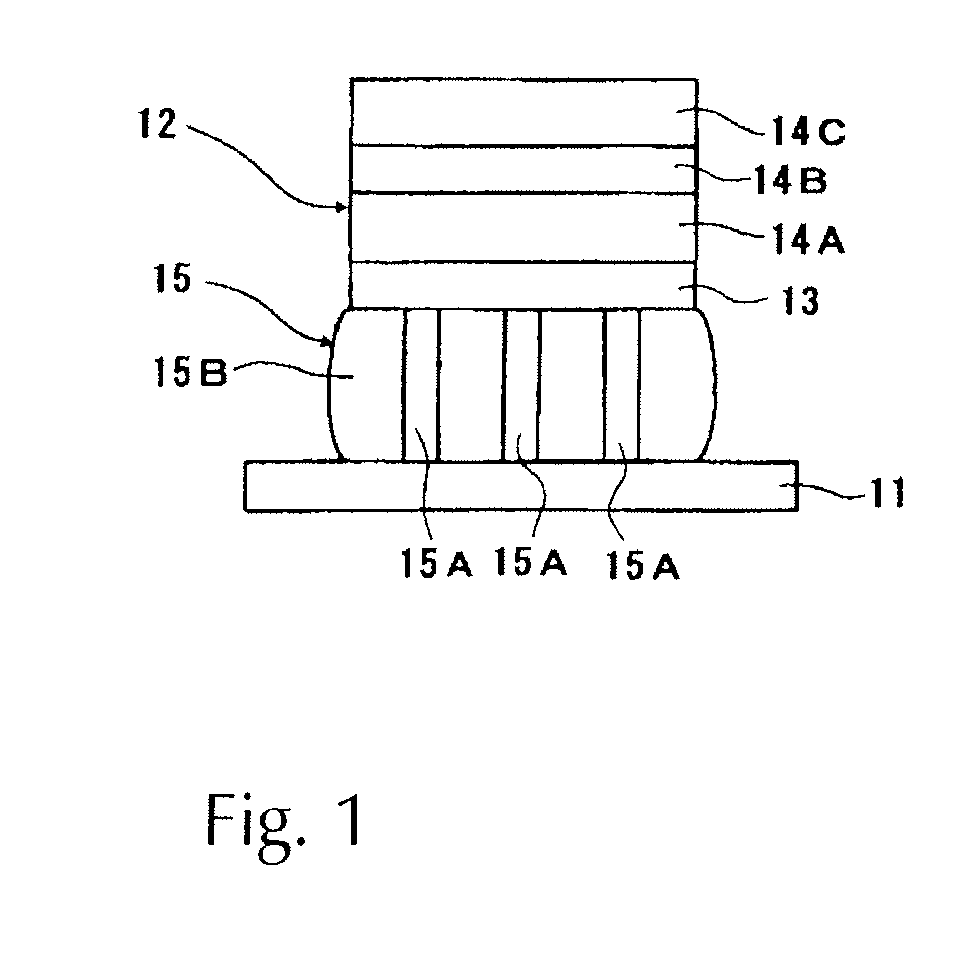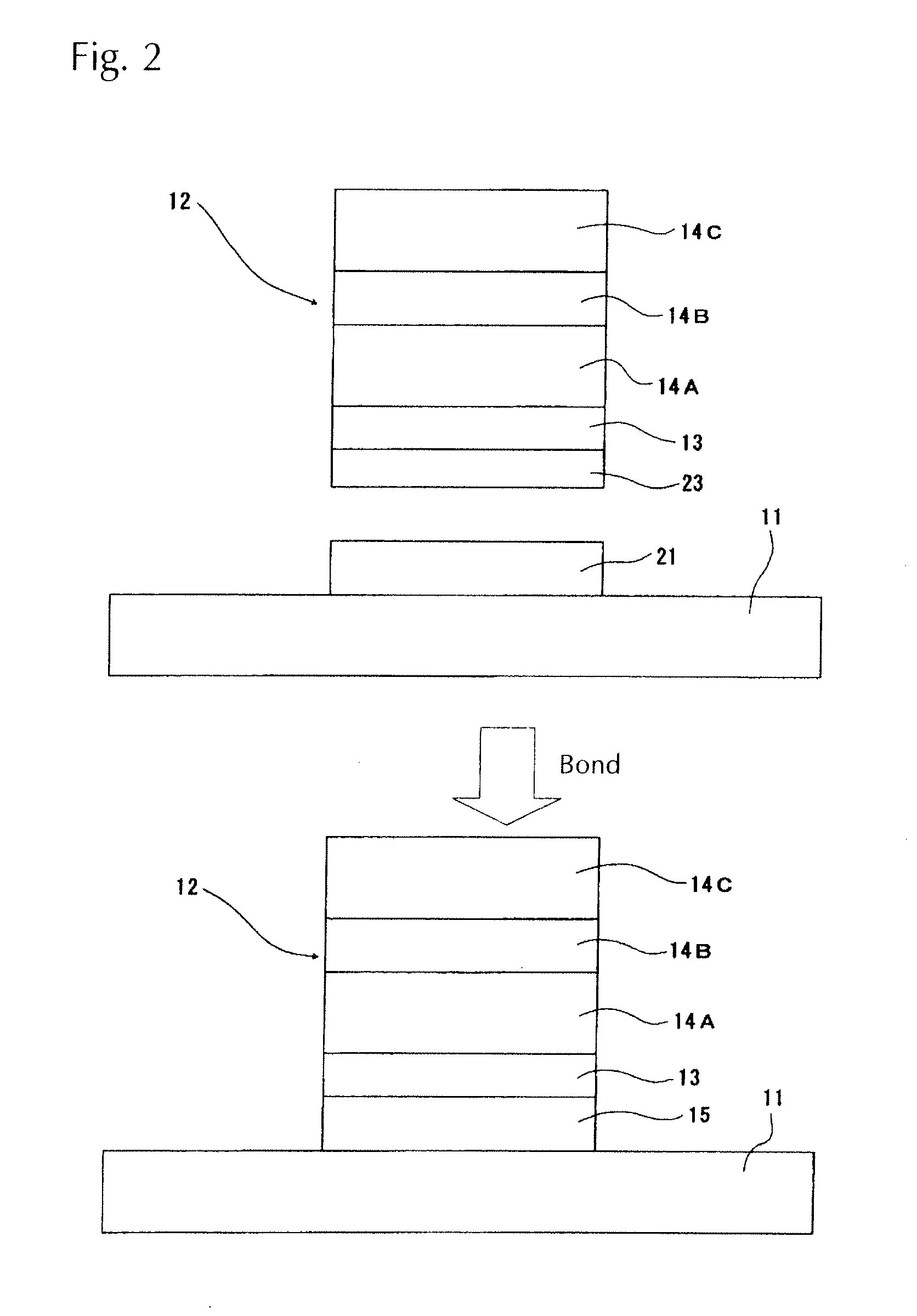LED device and method by which it is produced
a technology of led chips and manufacturing methods, applied in the direction of semiconductor/solid-state device manufacturing, semiconductor devices, electrical equipment, etc., can solve the problems of uneven heat treatment temperature needed on the exoergic member, difficult to bond multiple led chips simultaneously, uneven pressure, etc., to avoid uneven pressure application, increase brightness, and improve brightness
- Summary
- Abstract
- Description
- Claims
- Application Information
AI Technical Summary
Benefits of technology
Problems solved by technology
Method used
Image
Examples
embodiment 1
[0084]An exoergic member made of an aluminum nitride plate 5 mm long and 5 mm wide was prepared, as were 100 rectangular LED chips 350 μm long and 350 μm wide having a construction of nitride semiconductor layers which were an n-type semiconductor layer of n-GaN, a light-emitting layer of InGaN, and a p-type semiconductor layer of p-GaN, stacked in that order on sapphire substrates.
[0085]First, an Au film with a film thickness of 0.2 μm was formed by EB vapor deposition on the lower surface of the sapphire substrate of each of the 100 LED chips.
[0086]Further, an Sn film with a film thickness of 3 μm was patterned by EB vapor deposition onto each of 100 LED chip bonding regions on the exoergic member to match the lower surfaces of the LED chips to be bonded, arranged in a lattice shape of ten units vertically by ten units horizontally, separated by gaps of 30 μm.
[0087]Next, the LED chips with an Au film formed on their lower surfaces were mounted on the multiple Sn films formed on th...
PUM
 Login to View More
Login to View More Abstract
Description
Claims
Application Information
 Login to View More
Login to View More - R&D
- Intellectual Property
- Life Sciences
- Materials
- Tech Scout
- Unparalleled Data Quality
- Higher Quality Content
- 60% Fewer Hallucinations
Browse by: Latest US Patents, China's latest patents, Technical Efficacy Thesaurus, Application Domain, Technology Topic, Popular Technical Reports.
© 2025 PatSnap. All rights reserved.Legal|Privacy policy|Modern Slavery Act Transparency Statement|Sitemap|About US| Contact US: help@patsnap.com



